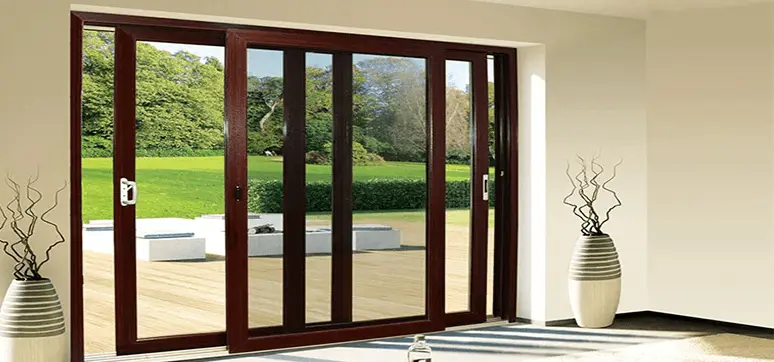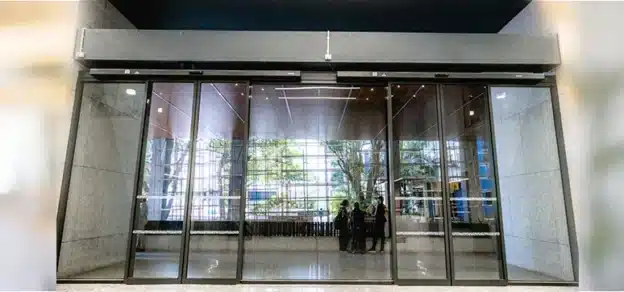Modern technology has given us much better alternatives. Along with many other building materials, the doors we install are wonders of engineering and design. They are aptly designed and well-insulated to provide a thermal barrier between the weather and your home or office, at the same time providing a beautiful entry setting. You can even get doors with large glass panels that use low-E glass technology to deliver excellent thermal performance. Thus, doors and windows play a major role in boosting the energy efficiency of any building. They may also provide some of the biggest energy savings.

This edition’s cover story is all about the right designs and proper installation techniques of doors in order to provide the utmost acoustic and thermal comfort within a building. It also elaborates on the performance evaluation of different door configurations to enhance energy conservation. We spoke to the experts on the above-mentioned topics, as well as on the impact of types of glazing on energy conservation and the selection of the right type of glazing. Here we present the excerpts from their comments and guidance on installing the right kind of doors for maintaining indoor comfort, at the same time reducing energy costs, and improving traffic flow and safety.
Door Window Evaluation: Measurement & Assessment For Interior Comfort Levels

Indoor comfort level helps when the door provides adequate security. One has to keep in mind acoustic, visual and thermal comfort to maintain the balance. Doors prevent excess heat or cold from entering and provide comfort. It

restricts excessive daylight and heating of the room and the door should have a double sealing gasket system, making it airtight, says Mario Schmidt, Managing Director, Lingel Windows and Doors Technologies Private Limited.
If the doors are properly installed as per the design & detail the intent of an architect, it will

definitely help in maintaining the indoor comfort level, points out Ashutosh Jha, Senior Architect & LEED AP (BD+C), PMP, Studio & Technical Director, Gensler at Bangalore, indoor comfort level depends on air quality inside the space. “Keep air flowing through your home or office so you are only exposed to fresh, clean air.

Opening the doors or windows is a great way to improve airflow, but this may not be the best option for people who live in humid climates or cities with a lot of outdoor air pollution. Striking right balance is very important,” Jha adds. Rajaikepin Rajamoni, Business Head, Sobha Façades points out that fenestration should act as a balance between functional requirements versus offering a comfortable shelter against the outdoor conditions. To keep the external environment, the doors should perform well on keeping wind, water, heat, cold and noise out.

The right type of door should be selected based on the functional requirements i.e., traffic, egress type, fire rating, etc., and performance requirements mainly considering air, water, thermal and acoustics. A well designed and detailed door with a correct selection of glass pane or other infill materials will play a key role in maintaining the indoor comfort levels.
According to Varghese PV, CEO, Glazing and Metal Works, Sobha Ltd, doors help maintain comfort by:
A. Giving proper acoustic closure. If the doors are made after a careful selection of sections, glass and gaskets, it can reduce sound considerably.
B. It can provide thermal comfort by reducing the heat transfer through the door. This requires a proper selection of glass or door infill material.
C. With proper doors, the discomfort due to water seepage can also be avoided.
Day lighting design saves energies in many ways. In day lighting, there are two categories, explains Avanish Singh Visen, CEO, Encraft – one is ‘side lighting’ and another one is ‘top lighting’. Side lighting products face the horizon and the top lighting products face the sky.
Doors and windows come under the ‘side lighting’ and it provides daylight and solar energy along with the perimeter of a building. Here an orientation with respect to the sun’s path is a critical factor.
Remember, the overriding goal of any day lighting design is how well it uses the available light. However, uncontrolled daylight may result in excessive heat gain and potential discomfort. It is important to ensure that the fenestration is appropriately sized and located, and that the correct glazing and accessories are selected. Use the fenestration area wisely to help insure the energy benefits balance the costs, adds Visen.
Superior noise resistance quality of uPVC doors offer excellent soundproofing for home, says Manish Bansal, Director, Window Magic India. uPVC doors also help in maintaining the right inside temperature irrespective of outdoor temperature. In today’s scenario, it’s difficult to find a place where a person can enjoy peaceful solitude, but the superior noise resistance quality of uPVC doors enables users to create silent zones, observes Bansal. uPVC windows and doors have excellent thermal performance. During winters, they resist heat loss, whereas, in summers, they oppose heat gain.
Improved Acoustics Through Proper Design & Installation Of Doors & Windows
“This is a broad subject and especially reminds me the doors positioned within the meeting room within the office space, using a combination of methods like door gaskets and weather-stripping certainly helps for acoustics”, says Ashutosh Jha.
The acoustical architectural design incorporates a noise reducing concepts in the details of individual buildings, explains Visen. The areas of architectural concern include building height, room arrangement, windows & doors design/installation, and balcony and courtyard design. Sound enters a building through its acoustically weakest points, and windows are one of the weakest parts of a wall.
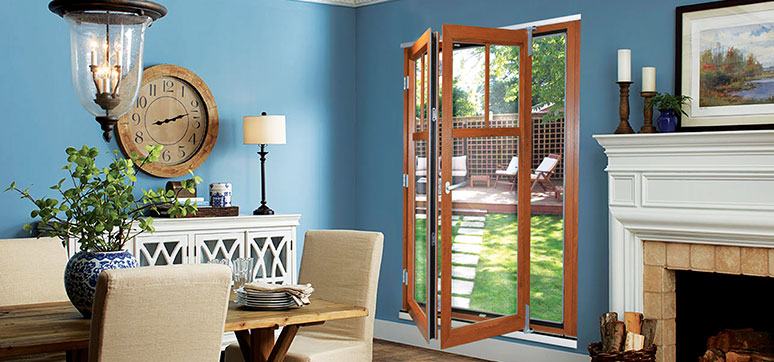
A wrong design or not properly installed window will severely negate the effect of a very strong wall. Double glazing is one of the most effective barriers against sound, and combined with uPVC window frame systems, it can reduce perceived noise by up to 80% (~45dB). uPVC windows with good weather sealing are essential for effective sound insulation. uPVC windows profiles are welded and have multiple chamber construction.
These two factors combined with the thickness of glass, provide the finished window with excellent acoustic insulation, reflecting sound waves before they have the opportunity to create vibrations and noise, says Visen.
The acoustics of a door can be improved drastically in three major ways, points out Varghese PV:
• There should be a proper selection of the outer frame and shutter frame. It is important to note that aluminium frames with multi-chamber sections and poly urethane infill will do the trick.
• Careful selection of gaskets, with a focus on quality, well designed gaskets play an important role in proper closure, offering good acoustics.
• The infill of the door is also very important. Double glazed glass panels with laminated glass as outer pane is suggested.
The following will have to be kept in mind to improve acoustics:
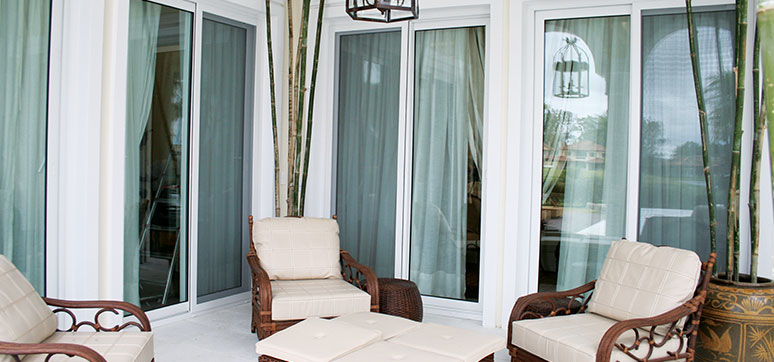
The window fabricator has to understand the customer’s demand and analyse the source of unwanted noise. The customer should be given practical advice and one would not talk about the percentage of noise reduction without specifying the exact noise reduction and the usage of a decibel meter. Besides this, the site should be visited to check the actual and typical noise.

Finally, the right choice of glass and window should be made. Be careful that the decibel reduction provided by the glass industry is tested as per EN717-1. Other key points to consider:
1. Ensure there are no gaps and cracks around the window frame
2. The design of the glass combination must suit the requirement and one must keep in mind the location, outer level of noise, type of building.
3. Combination of insulated and laminated glass can also help in sound reduction.
4. Use different configurations of glass thickness.
5. Between two layers of different glass thickness when the PVB layer is used, it has a dampening effect of sound. (Mario Schmidt, Managing Director Lingel Windows and Doors Technologies Pvt. Ltd.)
Though the major part of the acoustics in the door is decided by the glazing used, other factors like detailing, sealing the jambs and gaskets between frames are important in getting better acoustic performance, remarks Rajamoni. The frames also to be designed to accommodate required glass thicknesses for obtaining optimum values.
Next level is to increase the spacer size in DGU and using dissimilar thickness glasses to help dampen mid frequency noises. Further improvements shall be achieved using acoustic PVB layers in glasses and filler materials in frame cavities to reduce detonation, adds Rajamoni.
Improving Thermal Comfort Through Effective Fenestration

A door or a window provides ventilation for fresh air to come in and vice versa, observes Schmidt. It also provides air circulation. Other benefits could include making the place warmer by reducing drafts in the colder months.
The quality of air can be improved by using the seal and preventing or reducing mold growth and condensation. Well-designed and fitted window systems provide the following: improves energy efficiency, minimizes air leakage, improves the performance of the air conditioner and cuts down on electricity bills.
For an energy-efficient window system:
• Ensure there are no cracks or crevices as this increases the amount of energy loss.
• Windows and doors have a gasket seal that ensures there is no air leakage
• The kind of glass used will also make a difference
• Try to use fluorescent lights as it consumes less electricity and won’t heat up the place
• Have the right material door or window, for instance, uPVC
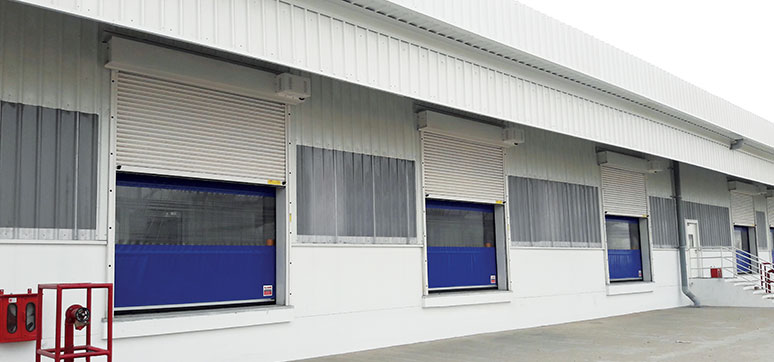
According to Rajamoni, having the appropriate size and quantity of openings in the building envelope is mandatory for occupant comfort. Apart from the functional requirement, doors and windows may allow undesired heat/cold, air, water and condensation if it is not designed and engineered properly. Thus, adequate thermal performance of fenestration must be assured for comfortable living. The process starts from the design of the correct fenestration type and quality, selection of frame materials and glass, meticulous engineering of joint details and intersection with other trades.
The following considerations would improve:
The right selection of glass is the primary requirement of thermal performance, many architects like to use more transparent glasses to get the fluidity into their design and to get abundant natural light inside. However, points out Rajamoni, there must be a balance of other parameters such as optimum light transmission, and in tropical countries, more importance to be given to shading coefficient over U values. Solar control glass/low E glasses with an optimum spacer can achieve the desired performance. Designers should look into relative heat gain per Sq m instead of merely looking into the U value alone.
Another important factor is cold profiles, i.e., thermally broken frames. In doors and windows, normally the exposed frame area will be high, hence, opting to thermal break will reduce the heat/cold transfer significantly.
Varghese, agreeing with Rajamoni, says: thermal comfort depends on the selection of façade material and glass. It is important to opt for a combination that provides the lowest “U” value and shading coefficient. Double glazing with proper space in between, double “low e” coated glasses for high performance among others are some of the techniques.
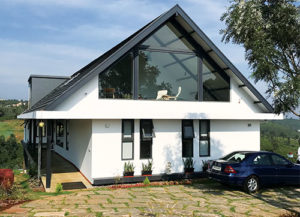
Thermal comfort not only depends on fenestration. It depends on the orientation of the building, thermal insulation provision on façade wall and many other factors, points out Jha. A well-detailed door is installed considering their location and exposure to the sun, and this can help with thermal insulation. A fenestration system with low U value and low effective SHGC, explains Visen, can result in a reduction of heating and cooling demand by 6 to 11 per cent in a moderate climate and between 8-16 per cent in hot humid, hot dry, and composite climates.
Thus, savings increase to 8 to 17 per cent for moderate, and 12 to 26 per cent for hot humid, hot dry, and composite climates, if high-performance fenestration system, with low-e glass, uPVC frames, and well-designed shading are factored in. Usage of double glazing reduces the internal temperature of the glass because of reduced conduction of heat from the outdoors. This results in better radiant temperature control and enhanced comfort. This effect can be felt in both heating and cooling, especially in spaces which have large glazed areas.
Performance Evaluation Of Different Door Configurations To Enhance Energy Conservation
Doors can contribute significantly to air leakage, and can also waste energy through conduction, especially if it’s not properly designed, improperly installed, and/or improperly air sealed, says Visen. During the construction of any building /home, an Individual should consider buying of most energy efficient doors possible, and for this, it is important to first consider their energy performance ratings in relation to the local climate and building/ home’s design.
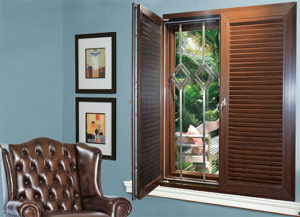
There are national councils worldwide, which helps to compare energy performance ratings of doors & it shows the “ “Solar Heat Gain Coefficient (SHGC) and U value” factor of the door which is the main criteria of doors ratings for energy conservation. If the door does not leak the inside air outside, half of your problem is solved, points out Jha.
If exterior doors are difficult to push open because the outside air wants to rush inside, this is an indication that the building is negatively pressurized. With negative pressure, the building is likely to pull outside air in from cracks, leading to increased humidity in warm weather and chilly drafts during cold.
A little positive pressure creates a barrier from the exterior, allowing for more control over interior conditions. The energy conservation by using windows/doors depends on the efficiency of heat resistance. Careful selection of material, proper procures and technologies will help achieve the objective, observes Varghese PV.
As a rule of thumb, says Rajamoni, hinged doors with thermal break and deeper profiles are expected to perform well compared to pivoted and swing doors. However, the selection of doors is purely based on functional requirements.
Adding vestibule design to the swing doors or revolving doors will help in energy conservation if there is high traffic. Both casement and sliding doors offer different levels of energy enhancement. While casement doors are better for soundproofing, they are also very effective in keeping the ambiance warm. On the other hand, sliding doors have a thick glass and insulated frames to offer better energy efficiency, adds Bansal.
Role Of Door & Window Materials In Energy Conservation
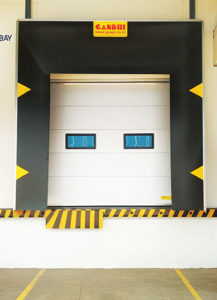
Apart from lowering heating and cooling bills, technology has played a big role in enhancing the energy efficiency features of doors and windows. This helps in keeping the homes cooler in summer and warmer in winters. Features like thick glass coating, improved thermal control, etc. significantly reduce energy consumption for temperature maintenance, points out Bansal.
Doors and windows contribute 30-45% of energy loss in a building and here the role of effective glazing comes which can also name as energy efficient glazing. This can improve the energy efficiency of building/homes, reduce the monthly electricity bills and decreases the carbon footprint, observes Visen. Low-E glass is the most popular glass for energy conservation. Apart from these, other glasses with excellent solar control properties and superior protective coating plays an important role in energy savings.
Jha too agrees that the materials used for fenestration play a big role in energy conservation. For external windows and doors, perhaps the reference is more about glazing door, looking at the features like performance glass having a right U value, solar heat gain coefficient and light transmission, which are very important. Getting all the above in right proportion is key to energy conservation. Visual Light Transmittance in right numbers is very important for daylight and energy both, opines Jha.
Low E-glass has maximum heat deflection, it means a very low U value, it stops the temperature from passing the glass, which gives it an edge over other window treatment options. The U value which is a measure of the rate of heat loss is expressed in watts per square metre, per degree Kelvin. Lower U values can be attained if there is a use of multiple glazing layers, gases, and low e-coating.
This also provides water tightness during the monsoon season. Even in dry and dusty areas, these windows are ideal because of their dust-proof performance. uPVC is the ideal material for windows and doors when it comes to energy conservation, says Schmidt. Contrary to the above points, Varghese observes that in a building, the impact of doors and windows in terms of energy conservation is less, as the area occupied by such elements is lower in comparison to the total peripheral area. However, in the case of commercial buildings with fill glass façade, the impact is high.
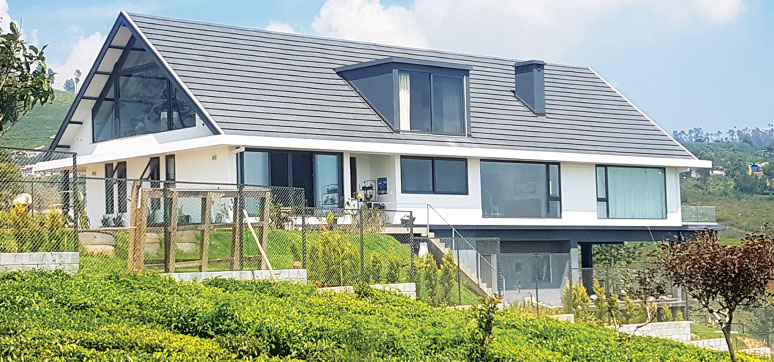
According to Kartik Gandhi, Director, Gandhi Automations, by ensuring doors are kept closed for the maximum time, with good perimeter sealing when closed, energy and temperature losses through doorways can be reduced, optimum operating rhythms can be achieved, and cross-contamination risks can be minimized. However, in a facility with significant traffic movements, be it pedestrians, forklifts or trucks, maintaining closed doors without serious disruption to your operations can be an Operations Manager’s nightmare!
Effective Glazing & Types Of Glass For Best Performance

Effective glazing cuts down heat transfer and also controls temperature, humidity, sunshine and wind as per the location. Glazing also enhances the beauty of the home, says Bansal. There are various types of glass option for the effectiveness of glazing like: floated glass, tinted glass, reflective glass, tempered glass and shatterproof glass. Each glass has a unique quality and its suitability is dependent on the environmental factors as well as user’s preferences.
Buyers are looking for solutions that save energy, are sound proof, low in maintenance, fire retardant, attractive, and have a long life. Primary heat losses or gains from a window or door frames occur via air infiltration and thermal conductions, and to overcome this, uPVC is one of the best solution, advices Visen.
Usually, a major amount of energy loss takes place through single glazed windows; but if one uses the double glazed uPVC it reduces energy loss to an extent, observes Schmidt. These windows have thermal insulation even without expensive special glasses, thus reduces energy loss.
Smart glazing for windows is using the right kind of glass with the right quality of the frame which increases the efficiency and is a vital element because it provides light, security and helps in noise control. The options one can consider are tinted, low-e, double glazed and much more. Also, the right glazing can also let in light and enhance the view. Glazing surely helps in efficiency when it comes to heat gain or heat loss.
For the best selection of glass for a door, one should consider:
A. Light Transmission (LT) – Glass units should have a high LT. Usually one has to look at a glass combination with 60 percent LT.
B. U value and shading coefficient (SF) – For increased energy saving, a glass combination that can provide a U value of around 1.2 and a shading coefficient of 0.25 is recommended.
A glass that fulfills these parameters with a light transmission of 60 per cent or above is an ideal choice. (Varghese PV, CEO, Glazing and Metal Works, Sobha Ltd)
Impact Of Types Of Glazing On Energy Conservation & Selection Of The Right Type Of Glazing

There are several types of glazing materials, which are applied to the windows and doors as per the need of the customer. When it comes to differentiating between single pane and double pane glasses, then double pane always tops the list as they are more energy efficient and easily available in the market, notes Bansal.
Nowadays, the innovative triple pane is also available in the market. They reflect 97 percent of energy and only allow 3 percent to pass through. Lastly, sandwich glass, the most efficient one, comes in various shapes and colours.
Conduction occurs easily with single glazing, observes Jha, as there is only one layer of glass between the inside air and outside air, allowing energy to escape more readily. Double glazing is the installation of two sheets of glass, with spacer bars fixed around the edge to keep the panes apart.
Between the two glass sheets is a layer of insulated air; this air space is often filled with an inert gas such as argon. Triple glazing is the installation of three sheets of glass, with spacer bars positioned around the edge. Again, each sheet is a layer of insulation air.
Triple glazing is certainly better from the energy conservation perspective. Visen too notes that a single pane of glass provides very poor insulation because glass is a good conductor of heat. Using double glazing with a layer of air or argon gas trapped between two panes of glass is much better since air or argon gas is a poor conductor of heat, and much less heat is lost through the window.

If the inside of one sheet has a low-E coating, lesser heat is lost since the coating reflects heat back into the room. In triple-glazed windows, the three sheets of glass may have two air gaps filled with argon. These windows offer 28% – 30% (approx.) more insulation than a double glazed window. It also decreases thermal transfer by 75% – 80%, making it the most energy-efficient option around. It also mitigates noise. Therefore, triple-glazed windows perform all the functions of double-glazed windows, but with more effectiveness. They are just marginally more expensive.
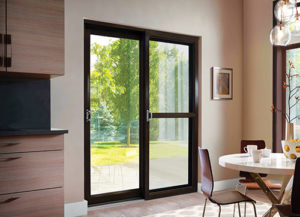
Laminated glass is two or more panes of glass with one or more layers of polyvinyl butyral (PVB) sandwiched between them and treated. It is most suitable wherever safety, security, noise control or UV control is a requirement. Ideally, we need to have a natural shading at the window area that no direct sunlight can reach the glass, suggests Schmidt.
Having that we can use a transparent glass and during the day time, artificial lighting can be reduced, which will help in saving cost and protect the environment. Overall, it is important to find the balance between solar factor and light transmission for the best performance.
According to Varghese, these are three aspects to consider for efficient fenestration:
• Selection of a high performance glass with low U value and shading coefficient.
• Adopting a process like double glazing with more space in between (24 – 32mm) and filling the space with inert gas.
• Adopting an overall glazing system with proper gasket or to resist heat ingress. One can also go for a thermal break system.
Advantages & Limitations Of Using Solar-Controlled Glass & Self-Cleaning Glass
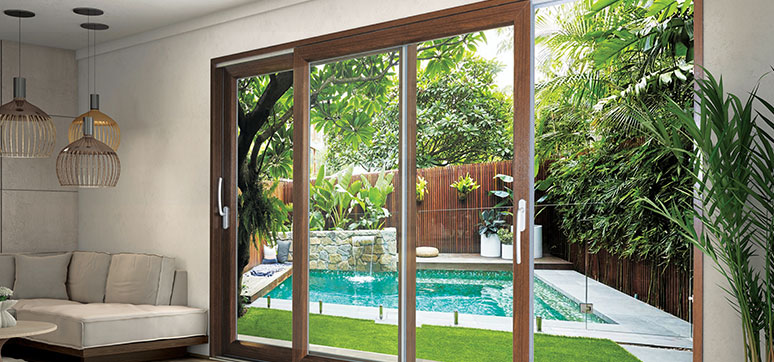
The solar controlled glass allows only a specified fraction of solar radiation energy to pass through, providing illumination, but helping to prevent overheating, which is great for energy conservation, says Jha. Self-cleaning glass really is no myth as its special coating breaks down organic dirt, whilst reducing the adherence of inorganic dirt, compared to conventional glass.
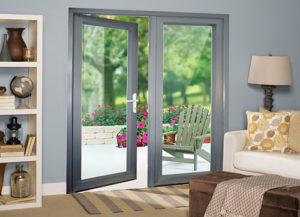
May be next-generation solar controlled glass and self-cleaning glass will be more popular, currently they have limitations, hopes Jha. Self-cleaning glass is a distinctive type of glass that needs minimal maintenance because its surface has been designed to keep itself free from dirt and grime. It helps in saving time and energy that goes into keeping windows looking great and has encouraged many homeowners to make the change to self-cleaning glass, notes Bansal.
“The self-cleaning glass is an advantage as you do not have to worry about cleaning or hire someone to do the job so it saves your time as well as money,” says Schmidt. For instance, in a glass conservatory, the self-cleaning glass is ideal as it reduces the solar glare and they are also energy efficient when the heat reflects the inner coating.
The disadvantage is that though it self-cleans, it does not always look very clean as expected. You have to depend on either the sunlight as well as rain to do the job. Also, you will still need to clean your windows from inside.
Key Factors To Consider While Selecting Hardware For Doors
Any hardware selection should be primarily based on specification and suitability, points out Visen. Like adjustment to frame cutting size, it should penetrate reinforcement or special anchorage points, it should pass the life cycle data, it should meet the expected corrosion resistance standard and it must meet the basic security requirement.
While considering the door hardware, one should always recall the home security as the door locks, handles and latch are the prominent part of the interior while selecting the hardware for doors, points out Bansal. Apart from this, an individual should consider the door designs that need to be used. One may possibly desire for matching chrome door handles for consistency, whereas others would like to differentiate the interiors with different handle designs for added design advantage.
According to Jha, the key factor is the usability of the space. “If I have to select the hardware of a fire door, I will ensure that the hinges, vision glass, door closer, etc. everything should have a similar fire rating (30 min, 60 min, 90 min or 120 min) of the door. If I have to select the hardware for a public toilet door, I will ensure that the door has a mop plate at the bottom”.
The hardware should be compatible with the glazing system, says Varghese. It should be simple to use and effective. Architects prefer aesthetically pleasing shapes and finishes from trusted brands for better durability.
Advantages of Solar Controlled Glass:
• Solar control glass moderates heat gained and shine of light entering the room and provide a relaxed environment for living.
• They permit the light to pass through them, so the usage of artificial lights is also optimized.
Advantages of Self-Cleaning Glass:
Self-cleaning glasses are recommended for obstinate spaces that are challenging to reach, such as areas on the roof. In case of limited mobility, self-cleaning glass is considered to be a worthy investment. The coating lasts for a lifetime and may significantly contribute to refining the appearance of conservatory over time. (Manish Bansal, Director, Window Magic India)
Fire Safety & Fire Doors
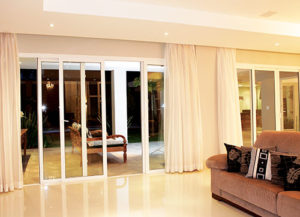
What are the key aspects to consider while selecting a fire door?
The criteria for the selection of fire doors will be their performance. The fire rating of the entire door assembly needs to be consistent, that includes the entire door assembly and the hardware as well.
According to Varghese, with the recent revision of the national building code, the fire safety norms have become stringent. From just a fire exit door, now the requirements include fire shaft, plumbing shaft, ventilation shaft, hub room, etc. This will extend to other areas as well with time.
“With the latest norms, the major airports, rail terminals are set to go through the overall changes and fire doors will be in great demand. The seriousness around fire life safety is set to grow”, says Jha. According to Gandhi, growing awareness of building safety and initiatives to minimize property damage during a fire accident will drive the fire door market demand. Superior safety, lightweight features, along with advancements in the production facilities are key trends followed by the industry players.
The flush-glazed fire door market is estimated to witness high growth owing to superior insulation as compared to its counterparts. Increasing demand for doors that offer safety and have lightweight applications will positively drive product penetration. Fire rated shutters and doors are designed to protect the facility up to four hours during a fire accident. Fire rated shutter stay open under normal circumstances and close automatically in the event of a fire.
Selecting Hardware for Doors :
The key parameters to keep in mind are security, noise reduction, sealing and child safety.
Hinges: When selecting a hinge, check if all the screws are within the window so that it is not visible outside and no rain or water can enter. It should also be able to take the required weight capacity, according to the design of the doors and windows. The designs of the fixing positions of the screws are made in such a way that no screws are visible on the outer surface and no screw is attached to the area where rain or water can enter. All the screw points should be ideally within the window only.
Friction Stays: This is a hardware which is used for outside opening and top-hung windows. Tilt & Turn Hardware: This is used for inside opening windows and doors.
A special sliding system with great hardware options can also be considered.
1. Lift and slide for doors up to 300 kg of panel weight provide perfect sealing and noise reduction.
2. Tilt and slide for doors up to 120kg of panel weight provide perfect sealing and noise reduction.
3. Shift and slide has the latest technology and innovation using the best parameters of both (lift and slide, and tilt and slide).
Handle with Locking System: This locking handle can easily be replaced for the standard handle. It is mainly used as a child safety feature, to prevent children from opening the window. (Mario Schmidt, Managing Director Lingel Windows and Doors Technologies Private Limited)
